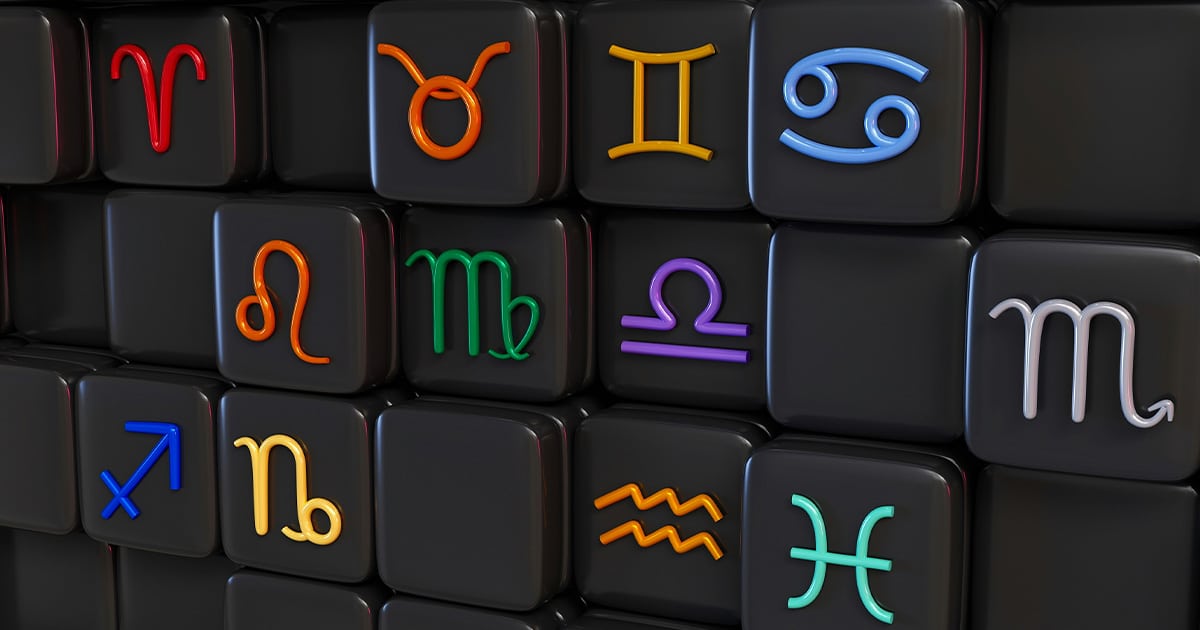Astrology has been a topic of fascination for centuries, captivating the minds of people from different cultures and backgrounds. But have you ever wondered how astrology actually works? How can the alignment of celestial bodies have an impact on our lives? In this blog post, we will delve into the intriguing world of astrology and uncover its mysteries.
To truly understand astrology, it is essential to start with the basics. We will begin by exploring the concept and history of astrology, tracing its origins back to ancient civilizations and the belief in the connection between celestial events and human affairs. We will then dive into Astrology 101, exploring the twelve zodiac signs and their meanings. From Aries to Pisces, we will uncover the unique characteristics and traits associated with each sign, and how they influence our personality and behavior.
But what exactly is the role of celestial bodies in astrology? We will explore the significance of the sun, moon, and planets, and how their positions in the sky can have an impact on our lives. Understanding the houses and their impact will also be crucial in unraveling the complexities of astrology, as we examine how the placement of planets in different houses can influence various aspects of our lives.
The practice of astrology involves the creation and interpretation of astrological charts, which provide a snapshot of the positions of celestial bodies at the time of a person’s birth. We will explore the process of creating these charts and how astrologers use them to make predictions about a person’s future. We will also delve into the accuracy and criticism surrounding astrological predictions, questioning whether they are merely vague generalizations or if there is indeed some truth to be found.
In today’s modern world, astrology continues to hold a significant place in many people’s lives. We will explore how astrology is used in daily life, offering insights and guidance on various aspects such as relationships, career choices, and personal development. We will also examine the role of astrology in pop culture and media, where horoscopes and astrological compatibility are frequently referenced. Furthermore, we will shed light on how astrology is viewed in the scientific community, where skepticism often prevails.
So, if you have ever wondered how astrology works and what it can reveal about yourself and the world around you, join us on this enlightening journey. Prepare to have your mind expanded and your curiosity satisfied as we explore the fascinating realm of astrology and its intricacies. Let’s uncover the hidden secrets of the stars and discover how they can influence our lives in ways we may have never imagined.

Understanding the Basics: The Concept and History of Astrology
Astrology, as a concept, is rooted in the belief that there is a correlation between the positions of celestial bodies and events happening on Earth. The study of astrology dates back thousands of years and has played a significant role in the cultures and civilizations of the past.
The Origin and Evolution of Astrology
Astrology can be traced back to ancient civilizations such as Mesopotamia, Egypt, and China. These early cultures observed the movements of celestial bodies and recognized patterns that seemed to correspond with earthly phenomena. Over time, these observations were recorded and developed into the astrological systems we know today.
Interested in Tarot? Try our free tools and calculators.
Astrology in Ancient Civilizations
In Mesopotamia, astrology was intricately linked to the worship of gods and the interpretation of celestial signs as messages from the divine. The Babylonians, for example, developed a sophisticated system of astrology, where the positions of planets and stars were believed to influence human affairs and the fate of nations.
In ancient Egypt, astrology played a crucial role in guiding the decisions of pharaohs and predicting the outcomes of battles and natural disasters. The alignment of stars was seen as a reflection of the gods’ will and provided insight into the future.
In China, astrology was intertwined with the philosophy of Yin and Yang and the Five Elements. The Chinese Zodiac, consisting of twelve animal signs, was used to determine personality traits and make predictions about a person’s life.
The Influence of Greek and Roman Astrology
During the Hellenistic period, astrology became highly influential in Greek and Roman societies. Greek philosophers such as Plato and Aristotle explored the connection between celestial bodies and human existence. Astrologers like Ptolemy further developed the system, introducing concepts such as the zodiac signs and the horoscope.
Roman emperors and leaders embraced astrology, seeking guidance from astrologers for important decisions, such as military campaigns and political alliances. Astrology played a significant role in Roman society and continued to thrive even after the fall of the Roman Empire.
Astrology in the Middle Ages and Renaissance
In the Middle Ages, astrology faced challenges due to the rise of Christianity, which viewed it as a form of divination and thus against religious doctrine. However, astrology managed to survive and flourish, particularly in the Islamic world, where scholars translated and preserved ancient astrological texts.
During the Renaissance, astrology experienced a resurgence as scholars rediscovered the works of ancient astrologers. Prominent figures such as Johannes Kepler and Galileo Galilei were both astronomers and astrologers, blending scientific observations with astrological interpretations.
Astrology in the Modern Era
Astrology has continued to evolve and adapt to the changing times. In the 20th century, the development of psychology and the New Age movement influenced the interpretation and application of astrology. Today, astrology remains popular, with millions of people consulting astrologers, reading horoscopes, and exploring their birth charts.
Understanding the concept and history of astrology provides a foundation for exploring its intricacies and how it has shaped societies throughout the ages. By delving into its origins and evolution, we gain a deeper appreciation for the beliefs and practices that have persisted across cultures and generations.

Astrology 101: The Zodiac Signs and Their Meanings
The zodiac signs play a central role in astrology, providing a framework for understanding personality traits, relationships, and life events. In this section, we will explore the twelve zodiac signs and delve into their meanings and characteristics.
What Are the Zodiac Signs?
The zodiac signs are twelve distinct astrological constellations that appear along the ecliptic, the apparent path of the Sun across the celestial sphere. Each zodiac sign is associated with specific dates, typically spanning a month, and represents different personalities and qualities.
The Meaning and Characteristics of Each Zodiac Sign
- Aries (March 21 – April 19): Aries is the first sign of the zodiac, symbolizing courage, independence, and a pioneering spirit. Individuals born under this sign are often assertive, energetic, and natural leaders.
- Taurus (April 20 – May 20): Taurus is characterized by stability, patience, and a strong sense of determination. Taureans are known for their practicality, loyalty, and appreciation for the finer things in life.
- Gemini (May 21 – June 20): Gemini represents adaptability, curiosity, and versatility. Geminis are often social, expressive, and intellectually inclined, with a penchant for communication and exploration.
- Cancer (June 21 – July 22): Cancer is associated with emotions, nurturing, and sensitivity. Cancerians are known for their empathy, intuition, and strong connection to family and home.
- Leo (July 23 – August 22): Leo symbolizes creativity, confidence, and leadership. Leos are often charismatic, generous, and passionate individuals who thrive in the spotlight.
- Virgo (August 23 – September 22): Virgo is characterized by practicality, attention to detail, and analytical thinking. Virgos are known for their reliability, precision, and strong work ethic.
- Libra (September 23 – October 22): Libra represents balance, harmony, and diplomacy. Those born under this sign are often sociable, fair-minded, and value justice and equality.
- Scorpio (October 23 – November 21): Scorpio symbolizes intensity, passion, and transformation. Scorpios are known for their determination, resourcefulness, and ability to delve into the depths of emotions.
- Sagittarius (November 22 – December 21): Sagittarius represents adventure, optimism, and a philosophical outlook on life. Sagittarians are often open-minded, enthusiastic, and seekers of knowledge.
- Capricorn (December 22 – January 19): Capricorn is associated with ambition, discipline, and a strong sense of responsibility. Capricorns are known for their practicality, patience, and drive for success.
- Aquarius (January 20 – February 18): Aquarius symbolizes originality, independence, and humanitarian values. Aquarians are often innovative, intellectual, and driven by a desire to make a positive impact on society.
- Pisces (February 19 – March 20): Pisces represents empathy, intuition, and creativity. Pisceans are known for their compassionate nature, artistic abilities, and deep connection to emotions.
How Zodiac Signs Influence Personality and Behavior
While it is important to remember that astrology offers generalizations and that individuals are unique, the zodiac signs provide insights into personality traits and behavioral tendencies. Understanding the zodiac signs can help individuals gain self-awareness, enhance relationships, and navigate life’s challenges with greater understanding.
By exploring the meanings and characteristics of each zodiac sign, we can begin to unravel the complexities of human personality and the ways in which these signs influence our lives. Whether you identify with your zodiac sign or are simply curious about the traits associated with others, astrology offers an intriguing lens through which to view ourselves and those around us.

The Role of Celestial Bodies in Astrology
Astrology attributes great significance to celestial bodies, such as the Sun, Moon, and planets, as they are believed to influence various aspects of human life and shape individual characteristics. In this section, we will explore the role of these celestial bodies in astrology and how their movements and positions impact our lives.
Sun, Moon, and Planets: Their Significance in Astrology
- The Sun: The Sun is considered the most vital celestial body in astrology, representing one’s core identity, ego, and vitality. It symbolizes self-expression, creativity, and the conscious self. The zodiac sign the Sun is in at the time of birth is known as the Sun sign, which is the basis for determining one’s horoscope.
- The Moon: The Moon governs emotions, instincts, and the subconscious mind. It reflects our nurturing qualities, intuition, and emotional responses. The Moon sign, determined by the zodiac sign the Moon is in at birth, provides insights into our emotional needs and reactions.
- The Planets: In astrology, various planets are assigned specific attributes and qualities that influence different aspects of our lives. Each planet represents a different energy or archetype. For instance:
- Mercury governs communication, intellect, and adaptability.
- Venus represents love, beauty, relationships, and pleasure.
- Mars symbolizes energy, passion, action, and assertiveness.
- Jupiter signifies expansion, abundance, wisdom, and opportunity.
- Saturn represents discipline, responsibility, limitations, and life lessons.
- Uranus symbolizes innovation, rebellion, and unexpected change.
- Neptune represents spirituality, dreams, and illusions.
- Pluto symbolizes transformation, power, and deep psychological processes.
Understanding the Houses and Their Impact
In addition to the celestial bodies, astrology also utilizes the concept of houses, which divide the astrological chart into twelve sections, each representing different areas of life. The houses provide a framework for understanding where specific planetary energies manifest in an individual’s life.
The houses represent various aspects of life, such as:
- Self and Identity: The first house represents the self, physical appearance, and overall personality.
- Finances and Values: The second house relates to money, possessions, and personal values.
- Communication and Learning: The third house governs communication, learning, and relationships with siblings.
- Home and Family: The fourth house represents home, family, roots, and the nurturing environment.
- Creativity and Romance: The fifth house signifies creativity, self-expression, romance, and children.
- Work and Health: The sixth house relates to work, service, health, and daily routines.
- Partnerships and Marriage: The seventh house represents partnerships, marriage, and significant relationships.
- Transformation and Shared Resources: The eighth house signifies transformation, shared resources, and intimacy.
- Higher Learning and Travel: The ninth house relates to higher education, travel, spirituality, and philosophy.
- Career and Public Image: The tenth house represents career, achievements, public image, and social status.
- Friendships and Community: The eleventh house signifies friendships, social networks, and group associations.
- Spirituality and Inner World: The twelfth house represents spirituality, subconscious mind, and hidden aspects of self.
The Influence of Planetary Movements
Astrology recognizes that the movements and alignments of celestial bodies are constantly changing, and these movements have a significant impact on our lives. Planetary transits and progressions refer to the current positions of planets in relation to our natal chart and provide insights into the energies and influences at play during specific periods.
By understanding planetary movements, astrologers can make predictions and provide guidance on how these energies may affect different areas of our lives. Transits and progressions can shed light on opportunities, challenges, and significant life events, allowing individuals to navigate their paths with a deeper understanding of the cosmic forces at play.
Understanding the role of celestial bodies in astrology, as well as the significance of houses and planetary movements, provides a foundation for interpreting astrological charts and gaining insights into how these cosmic influences shape our individual experiences. It allows us to explore the intricate dance between the celestial and the terrestrial, and how they intertwine to create the tapestry of our lives.

The Practice of Astrology: Astrological Chart and Predictions
The practice of astrology involves the creation and interpretation of astrological charts, also known as birth charts or natal charts. These charts serve as a blueprint of the positions of celestial bodies at the time of an individual’s birth and provide valuable insights into one’s personality, strengths, weaknesses, and life events. In this section, we will explore the process of creating astrological charts and how astrologers make predictions based on them.
Interested in Tarot? Try our free tools and calculators.
The Creation and Interpretation of an Astrological Chart
- Gathering Birth Data: To create an astrological chart, accurate birth data is essential. This includes the exact date, time, and location of an individual’s birth. The date and time help determine the positions of celestial bodies at that particular moment, while the location provides the coordinates necessary for accurate calculations.
- Calculating the Chart: Once the birth data is collected, astrologers use specialized software or manual calculations to generate the astrological chart. This chart is a circular representation of the celestial sphere, divided into twelve houses and populated with the positions of the Sun, Moon, planets, and other celestial bodies at the time of birth.
- Analyzing the Houses and Planets: Astrologers interpret the astrological chart by examining the relationships between the houses, planets, and other points in the chart, such as the Ascendant (rising sign) and Midheaven (the point at the top of the chart). Each house and planet symbolizes different areas of life and carries specific meanings and influences.
- Understanding Aspects: Aspects are the angles formed between planets in the astrological chart. They indicate the interactions and relationships between celestial bodies. Major aspects include conjunctions, oppositions, trines, squares, and sextiles. These aspects provide further insights into how different energies interact and affect an individual’s life.
How Predictions Are Made in Astrology
Astrologers use various techniques and tools to make predictions based on the information derived from the astrological chart. Here are a few commonly used methods:
- Transits: Transits involve studying the current positions of planets in relation to an individual’s natal chart. By analyzing the transits, astrologers can identify significant time periods when certain planetary energies may influence various areas of life. Transits can indicate opportunities, challenges, and significant events.
- Progressions: Progressions involve advancing the positions of celestial bodies in the natal chart to reflect the passage of time. They offer insights into an individual’s personal growth, changes, and life cycles. Progressed charts can be used to make predictions and provide a deeper understanding of long-term trends and developmental phases.
- Solar Returns: A solar return chart is created for the exact moment the Sun returns to its natal position each year, typically on a person’s birthday. This chart provides insights into the themes and energies that may shape the upcoming year.
- Secondary Progressions: Secondary progressions involve advancing the natal positions of celestial bodies by a day for each year of life. This method creates a symbolic map of an individual’s life journey, offering insights into significant events, personal growth, and shifts in consciousness.
Astrologers combine these techniques, along with their intuition and experience, to make predictions and provide guidance to individuals seeking insight into their lives. It is important to note that astrology does not predict specific events with absolute certainty, but rather offers a framework for understanding potential trends, patterns, and influences.
The practice of astrology, with its creation of astrological charts and the interpretation of their symbols and aspects, provides a powerful tool for self-reflection, understanding, and personal growth. By exploring the depths of an individual’s birth chart and making predictions based on celestial movements, astrology offers a unique perspective on the interplay between cosmic forces and human existence.

Astrology in Modern Times
Astrology has continued to captivate and influence people in modern times, albeit in different ways than in ancient civilizations. In this section, we will explore the role of astrology in contemporary society, its use in daily life, its presence in pop culture and media, and its reception in the scientific community.
The Use of Astrology in Daily Life
Many individuals turn to astrology as a tool for self-reflection, personal growth, and decision-making. Astrology provides insights into personality traits, compatibility in relationships, and potential life events. People consult astrologers, read horoscopes, and explore their birth charts to gain a deeper understanding of themselves and seek guidance in various aspects of their lives, such as career choices, relationships, and personal development.
Astrology in Pop Culture and Media
Astrology has woven itself into the fabric of popular culture and media. Horoscopes are a common feature in newspapers, magazines, and online platforms, offering brief astrological predictions based on zodiac signs. Many people identify with their zodiac sign and enjoy reading about their personality traits and potential future developments.
Astrology has also found a prominent place in entertainment. Films, TV shows, and books often incorporate astrological themes, characters, or storylines. Additionally, astrological compatibility is frequently referenced in discussions about relationships, both in fiction and in real-life conversations.
How Astrology is Viewed in the Scientific Community
Astrology’s position in the scientific community is a complex and debated topic. Mainstream science generally dismisses astrology as a pseudoscience, citing a lack of empirical evidence and the absence of a plausible mechanism to explain its workings. Scientists argue that astrological predictions rely on generalizations and subjective interpretations rather than rigorous scientific methods.
However, it is worth noting that some researchers have explored connections between astrology and psychology, seeking to understand the psychological mechanisms behind people’s belief in astrology and its potential impact on their behavior and well-being. Nevertheless, the majority of the scientific community remains skeptical about astrology’s validity and its ability to provide accurate predictions.
The Evolution and Adaptation of Astrology
Astrology has evolved and adapted to the changing times. With the rise of the internet, astrology has become more accessible than ever before. Online platforms offer birth chart calculations, personalized horoscopes, and forums for astrological discussions. Social media platforms also serve as spaces for astrologers to share their insights and build communities of astrology enthusiasts.
Additionally, some modern astrologers have integrated psychological principles, mythological symbolism, and spiritual perspectives into their practice. They aim to blend astrology with other disciplines to provide a holistic understanding of human experiences and the cosmic influences at play.
In conclusion, astrology continues to play a significant role in modern times. Whether embraced as a tool for self-reflection and guidance or encountered in entertainment and pop culture, astrology remains a source of fascination and intrigue for many. While the scientific community remains skeptical, astrology continues to evolve and adapt, offering individuals a unique lens through which to explore themselves and the world around them.


